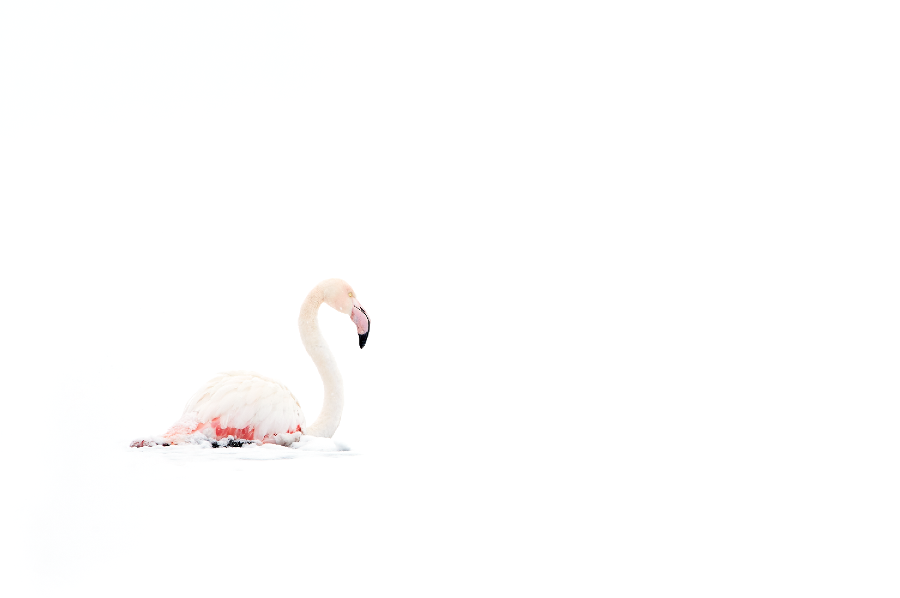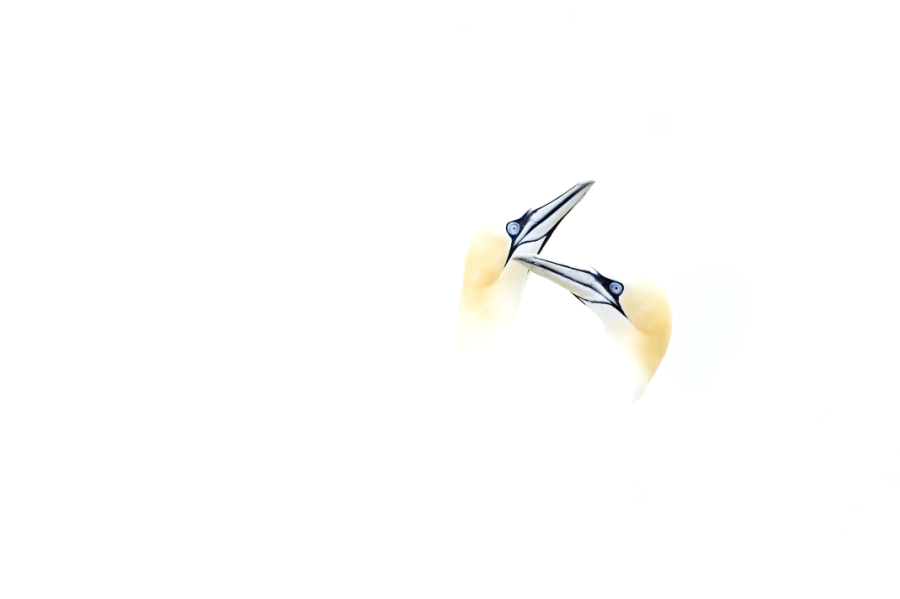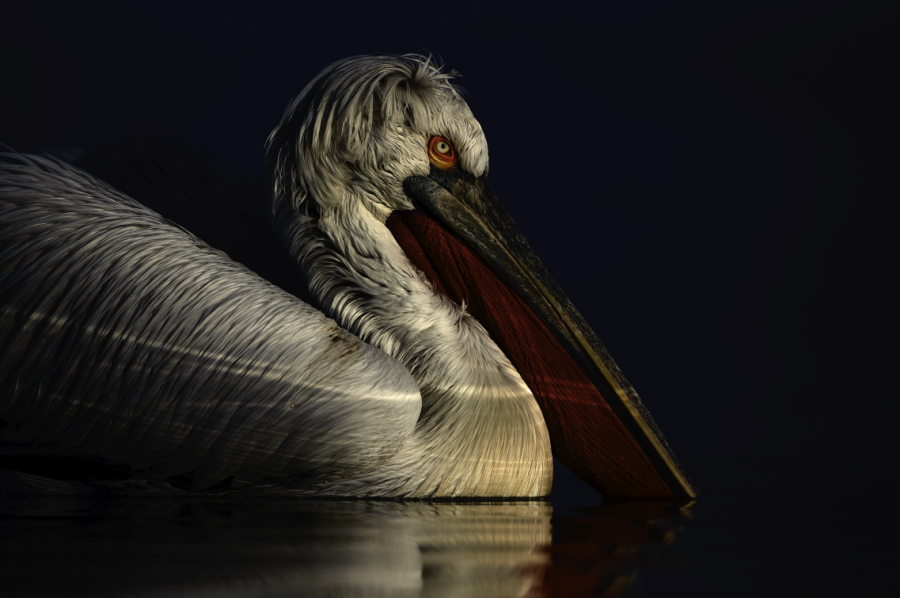Ellie Rothnie uses high-key and low-key lighting to produce creative wildlife photographs in-camera

All photography courtesy of Ellie Rothnie. For more of Ellie's work, click HERE.
I use high-key and low-key techniques a lot in my wildlife photography. It’s a good way of taking creative images in certain conditions and conveying mood, whether that be light and bright or dark and brooding. On days with certain weather conditions or environments that are very light or dark, such as snow or dark cliffs, these techniques can provide photographers with different creative options.
So what does high-key and low-key actually mean? A high-key image is dominated by bright, white tones and in wildlife photography it helps to create simple, clean images – it basically focuses the viewer’s attention on the subject. A low-key image is dark and moody, with few highlights. The subject is positioned against a dark background and is often photographed using the contre-jour technique – where the subject is taken against a light source to produce silhouetting.
Most cameras now feature an exposure compensation function, shown as a scale in positive to negative increments. Your camera does not know that a subject or scene is white. In fact, it assumes that the scene is an average grey. This means that when a camera sees bright light from a white subject or scene, it naturally underexposes the image. Likewise, if the subject or scene is predominantly dark, the camera will overexpose the image. This is where exposure compensation comes in and how high-key and low-key images can be created.
High-key
When outdoors and without the benefit of studio-controlled lighting, high-key images can only be achieved in certain weather conditions or environments. I find that mist/fog, bland grey skies or snow works well with many wildlife subjects, especially with white birds like the gannet or Dalmatian pelican. I also like to use high-key exposures with contrasting subjects in the snow, like the red fox, bison or coyote.
I use two approaches when photographing high-key subjects and each is dependent on the mood I want to create. The first approach is to add positive exposure compensation by pushing the exposure, as far as possible, to the right of the histogram without burning the highlights.
This image of a mountain hare (Lepus timidus) was taken in the Cairngorms on a cloudy day with snow on the ground, perfect for a high-key approach. By using a positive exposure compensation of +2.3EV and checking the histogram regularly, the image is brightened and a lighter mood is conveyed while still retaining a good exposure on the subject.

Kit and settings: Canon EOS 1D-X with Canon EF 300mm f/2.8L IS II USM lens. Aperture: f/4.5. ISO: 1000. Shutter-speed: 1/1000. Exposure compensation: +2.3EV.
The second approach that I use is to push the whiter tones of the foreground or background into overexposure, again, using the histogram regularly to ensure that these elements are clipping without overexposing the subject. This technique requires careful management, especially if the subject also has white tones.
This image of a greater flamingo (Phoenicopterus roseus) was taken using the same approach during very unusual weather conditions at Lake Kerkini, Greece, in January 2017. In Greece, snow in January is not a common sight. In fact, such sub-zero temperatures had not been witnessed for 15 years and provided the perfect weather conditions for high-key photography. By dialling in an exposure value of +2EV, I overexposed the snow-covered foreground and background, which framed the subject in bright white, eliminating the background’s detail. It creates a mood of simplicity for this highly unusual scene.

Kit and settings: Canon EOS 1D-X with Canon EF 500mm f/4L IS USM lens and +1.4x teleconverter (700mm). Aperture: f/6.3. ISO: 200. Shutter-speed: 1/800. Exposure compensation: +2EV.
Again, with this image of two courting gannets (Morus bassanus) taken in Eire, I used an exposure value of +2EV, rendering the grey rock in the foreground and grey fog in the background white. It’s an extreme approach, but it can provide greater creative opportunities in certain weather conditions.

Kit and settings: Canon EOS 1D-X with Canon EF 500mm f/4L IS USM lens and +1.4x teleconverter (700mm). Aperture: f/5.6. ISO 400. Shutter-speed: 1/1000.
Low-key
Low-key images tend to have a higher proportion of darker tones. As such, a subject with a darker background and side or backlighting works best. Low-key images convey a more dramatic mood, and contrast between light and dark.
For example, this image of a Dalmatian pelican (Pelecanus crispus) was taken at Lake Kerkini, Greece, at sunrise. The low sunlight hit the pelican from the right-hand side of the image, creating wonderful lighting and water reflections on the feathers. By using a negative exposure compensation, the image was darkened to accentuate the light on the feathers against the darker water.

Kit and settings: Canon EOS-1D X with Canon EF 500mm f/4L IS USM lens. Aperture: f/5. ISO: 500. Shutter-speed: 1/6400.
The same technique can also be used for subjects with backlighting, such as this red squirrel (Sciurus vulgaris) taken in the Cairngorms. Using a negative exposure compensation of -0.3EV, the forest in the background and tree in the foreground are darkened which accentuates the lighting around the squirrel.

Kit and settings: Canon EOS-1D X with Canon EF 500mm f/4L IS USM lens. Aperture: f/4. ISO: 1000. Shutter-speed: 1/1250. Exposure compensation: -0.3EV.
High-key and low-key wildlife images demand very specific environmental conditions and weather, but the effects of a successful image can be dramatic and can provide your photography with a completely new dimension.
Quick tips
1. To shoot high-key images, look for weather conditions like mist/fog, snow and blank grey skies. For low-key images, look for a subject against a darker background with side or backlighting.
2. Use a positive (+EV) exposure compensation for high-key subjects and a negative (-EV) exposure compensation for low-key subjects.
3. With high-key and low-key photography, check the histogram regularly to make sure the exposures are correct. Don’t rely on your camera’s LCD.
About the Author
Ellie Rothnie is an award-winning freelance wildlife photographer, tour leader and photographic guide based in the UK. Visit her Instagram, Twitter and website to see more of Ellie’s work.
Related articles
Gain Followers and Build a More Successful Instagram Page | Five Top Tips
The Opportune Moment | Landscape Photography in Zion National Park
How to Become a Wildlife Filmmaker | 11 Tips

